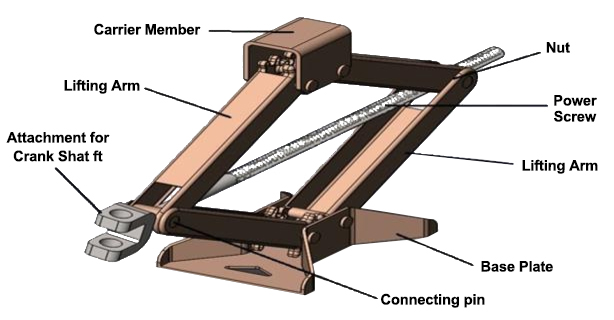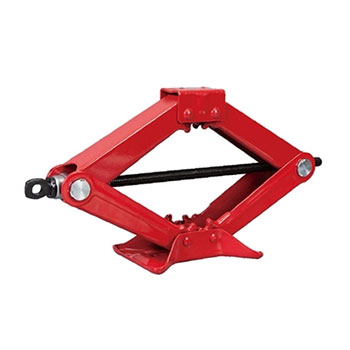What is a Scissor Jack?
A jack is a common tool used to lift heavy objects, and a scissor jack is one of the commonly used types. In this article, ATO industrial automation will provide a detailed introduction to the composition of the scissor jack, explain its working principle from a mechanical perspective, and discuss its advantages and application areas.
Composition of the Scissor Jack
The scissor jack is composed of several main components:
- Handle: Responsible for providing manual force to operate the jack's lifting and lowering.
- Scissor Arms: Consisting of two arms connected by joints, forming a scissor shape.
- Lifting Rod: Connected to the scissor arms, the lifting is achieved through the movement of the scissor arms.
- Lifting Base: Located at the top of the lifting rod, supporting and securing the top of the jack.
- Base Plate: Located at the bottom of the jack, providing a stable support surface.
- Jack Head: Located at the top of the jack, used to make contact with the object to be lifted.

Working Principle of the Scissor Jack
The working principle of the scissor jack is based on the principles of leverage and force balance. When we clamp the object to be lifted with the scissor arms and rotate the screw rod, the scissor arms gradually close, lifting the object.
- Lever Principle
The scissor jack utilizes the lever principle, meaning that applying force at one point can generate a larger force at the other end. In the scissor jack, the screw rod acts as the fulcrum, and the scissor arms are the force application part. When we rotate the screw rod, the force is transmitted to the scissor arms, causing them to gradually close and generate enough force to lift the object. - Force Balance
The scissor jack must maintain force balance during operation, which is crucial for lifting objects. As we apply force to close the scissor arms, the top support plate will exert an equal force downward, maintaining force balance. This ensures that even as we continue to rotate the screw rod, the scissor arms remain in a balanced position, keeping the lifted object stable.
Advantages of the Scissor Jack
The scissor jack has unique advantages compared to other types of jacks, making it widely used in specific applications.
- Simple and Reliable Structure
The structure of the scissor jack is relatively simple, consisting of only a few basic components, making it convenient for both use and maintenance. The tight connection between components contributes to the scissor jack's high stability and reliability. - High Load-Bearing Capacity
Made of metal materials, the scissor jack has high strength and rigidity, allowing it to withstand large loads. This makes the scissor jack perform well in situations where lifting heavy objects or providing temporary support is required. - Flexible and Convenient to Use
Due to its compact structure and small size, the scissor jack is easy to carry and use. Whether in outdoor activities or on construction sites, the scissor jack can be quickly set up to accomplish lifting or supporting tasks.
Applications of the Scissor Jack
Due to its simple structure, high reliability, and large load-bearing capacity, the scissor jack is widely used in various fields.
- Automotive Maintenance

The scissor jack is a commonly used tool in automotive maintenance. It can stably lift the car during tire replacement or chassis repairs, providing convenience for mechanics. - Construction
In construction, the scissor jack is often used to support temporary structures or beams and columns. Its high load-bearing capacity ensures stable support for heavy loads, ensuring construction safety. - Stage Setup
In stage setup, the scissor jack is frequently used to lift large lighting equipment or stage background decorations. Its simple structure and high reliability make it an indispensable tool in stage construction work.
The scissor jack is a tool that utilizes the principles of leverage and force balance. By rotating the screw rod, the scissor arms gradually close, lifting the object. Its simple structure, high reliability, and large load-bearing capacity make it widely used in automotive maintenance, construction, stage setup, and other fields. Understanding the working principle and advantages of the scissor jack allows us to better use and maintain this practical tool, improving work efficiency.

